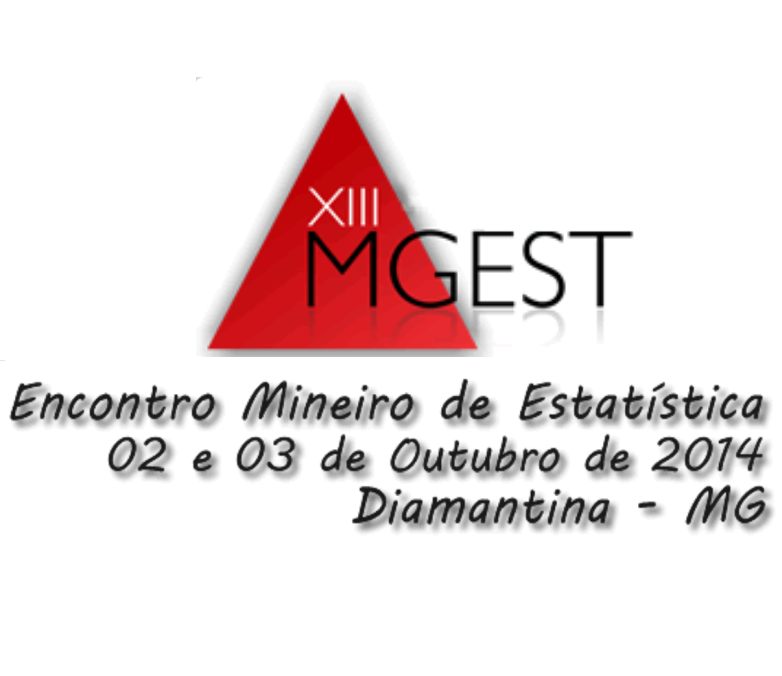Inferential aspects in the Generalized Partial Credit Model of Item Response Theory
Keywords:
Item Response Theory, identifiability, frequentist inferenceAbstract
The Generalized Partial Credit Model (GPCM) belongs to the family of models of
gradual polytomous response of Item Response Theory (IRT). It is appropriate for modeling items
(questions) which belong to some gradual scale. Although it is very important, has not received
proper attention, in particular, in Portuguese literature. Even in the international, some points have not been studied in details. With this in mind, in this project we presented main inferential aspects (under the frequentist approach) of GPCM. Specifically, we studied graphically how changes in parameters values influencing a behavior of the item characteristic curve (ICC). We studied necessary conditions to ensure the identifiability of the model. These discussions served as basis for the main goal achievement: to develop and implement computationally a frequentist estimation method of GPCM. In simulation studies we evaluated an estimates accuracy considering different situations of practical interest. The results indicated that all methods produced reasonable results. In addition, we found the factors with the greatest impact on the estimates of latent traits (number of items and categories), the discrimination parameters (number of in-
dividuals and categories) and difficulty parameters (number of items, categories and individuals).
References
ACACIA, A. et al. O teste de cloze na avaliação da compreensão em leitura. Psicologia: Reflexão e Crítica, 15(3), pp. 549-560, 2002.
ANDRADE, D. F.; TAVARES, H. R.; VALLE, R.C. Teoria de Resposta ao Item: conceitos e aplicações. Associação Brasileira de Estatística - ABE, 14o Sinape, 2000.
AZEVEDO, C. L. N. Métodos de estimação na teoria da resposta ao item: Máxima verossimilhança versus métodos bayesianos. Trabalho apresentado ao 15 SINAPE: Aguas de Lindoia, SP, 2002.
BOCK, R. D. & AITKIN, M. Marginal maximum likelihoodestimation of item parameters: An application of an em algorithm. Psychometrika, 46(4):433 - 459, 1981
CORDEIRO, G. M. Introdução a Teoria de Verossimilhanca. 2o SINAPE, ABE, 1992.
DAVERY, T., NERING, M. L., & THOMPSON, T. Realistic simulation of item response data.
ACT Research Report Series (www.act.org), 1997.
DEMARS, C. E. Sample size and the recovery of nominal response model item parameters.
Applied Psychological Measurement, 27(4):275-288, 2003.
DEMPSTER, A. P., LAIRD, N. M., & RUBIN, D. B. Maximum likelihood from incomplete data via the em algorithm. Journal of the Royal Statistical Society, 39, (Series B), 1-38, 1977.
KENDALL, M. G. & STUART, A. The Advanced Theory of Statistics. New York, NY: Hafner Publishing Company, vol.2, 1973.
MATOS, G. S. Modelos multidimensionais da TRI com distribuições assimétricas para os traços latentes. Tese de doutorado. USP, 2008.
MISLEVY, R. J. & BOCK, R. D. Biweight estimates of latent ability. Educational and Psychological Measurement, 42, 725-737, 1982.
MURAKI, E. A generalized partial credit model: Application of an em algorithm. Applied psychological measurement, 16(2): 159-176, 1992.
MURAKI, E. A Generalized Partial Credit Model. Wim J. van der Linden and Ronald K. Hambleton eds, Springer-Verlag, New York, NY, rst edition, 1997.
RIVERS, D. Identification of multidimensional spatial voting models. Typescript, Department of political science, Stanford University, 2003.
STROUD, A. H. & SECREST, D. Gaussian quadrature formulas. Englewood Cli s Nj: Prentice Hall, 1966.
Downloads
Published
How to Cite
Issue
Section
License
Proposta de Política para Periódicos de Acesso Livre
Autores que publicam nesta revista concordam com os seguintes termos:
- Autores mantém os direitos autorais e concedem à revista o direito de primeira publicação, com o trabalho simultaneamente licenciado sob a Licença Creative Commons Attribution que permite o compartilhamento do trabalho com reconhecimento da autoria e publicação inicial nesta revista.
- Autores têm autorização para assumir contratos adicionais separadamente, para distribuição não-exclusiva da versão do trabalho publicada nesta revista (ex.: publicar em repositório institucional ou como capítulo de livro), com reconhecimento de autoria e publicação inicial nesta revista.
- Autores têm permissão e são estimulados a publicar e distribuir seu trabalho online (ex.: em repositórios institucionais ou na sua página pessoal) a qualquer ponto antes ou durante o processo editorial, já que isso pode gerar alterações produtivas, bem como aumentar o impacto e a citação do trabalho publicado (Veja O Efeito do Acesso Livre).

